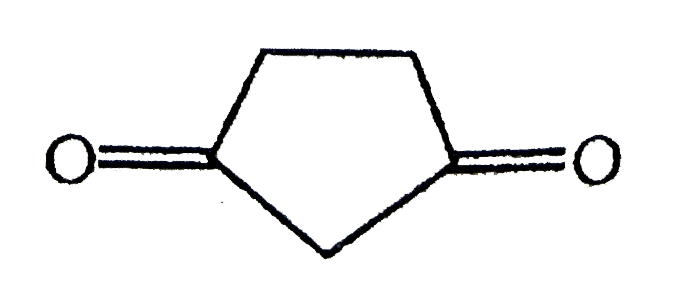A carboxylic acid of the formula, C3H5O2Br is optically active. What is its structure?
To determine the structure of the carboxylic acid with the formula C₃H₅O₂Br that is optically active, we can follow these steps:
Step 1: Analyze the Molecular Formula
The molecular formula C₃H₅O₂Br indicates that the compound contains:
- 3 Carbon (C) atoms
- 5 Hydrogen (H) atoms
- 2 Oxygen (O) atoms
- 1 Bromine (Br) atom
Step 2: Identify the Functional Groups
Since the compound is a carboxylic acid, it must contain a carboxyl group (-COOH). This group accounts for one carbon and two oxygen atoms.
Step 3: Determine the Remaining Atoms
After accounting for the carboxyl group, we have:
- 2 Carbon atoms remaining (3 total - 1 from -COOH)
- 5 Hydrogen atoms
- 1 Bromine atom
Step 4: Construct Possible Structures
With 2 remaining carbon atoms, we can arrange them in different ways. The simplest structure would be a straight-chain or branched structure.
Step 5: Consider Optical Activity
For a compound to be optically active, it must have a chiral center. A chiral center is typically a carbon atom bonded to four different substituents.
Step 6: Draw the Structure
One possible structure that meets these criteria is 2-bromopropanoic acid, which can be represented as follows:
Br|H3C−C−COOH|H
In this structure:
- The carbon atom in the center (C2) is bonded to four different groups: a bromine atom (Br), a hydrogen atom (H), a methyl group (CH₃), and a carboxylic acid group (COOH). This makes it chiral and thus optically active.
Final Structure
The structure of the carboxylic acid C₃H₅O₂Br that is optically active is 2-bromopropanoic acid.
---
The molecular formula C₃H₅O₂Br indicates that the compound contains:
- 3 Carbon (C) atoms
- 5 Hydrogen (H) atoms
- 2 Oxygen (O) atoms
- 1 Bromine (Br) atom
Since the compound is a carboxylic acid, it must contain a carboxyl group (-COOH). This group accounts for one carbon and two oxygen atoms.
After accounting for the carboxyl group, we have:
- 2 Carbon atoms remaining (3 total - 1 from -COOH)
- 5 Hydrogen atoms
- 1 Bromine atom
With 2 remaining carbon atoms, we can arrange them in different ways. The simplest structure would be a straight-chain or branched structure.
For a compound to be optically active, it must have a chiral center. A chiral center is typically a carbon atom bonded to four different substituents.
One possible structure that meets these criteria is 2-bromopropanoic acid, which can be represented as follows:
- The carbon atom in the center (C2) is bonded to four different groups: a bromine atom (Br), a hydrogen atom (H), a methyl group (CH₃), and a carboxylic acid group (COOH). This makes it chiral and thus optically active.
The structure of the carboxylic acid C₃H₅O₂Br that is optically active is 2-bromopropanoic acid.
Topper's Solved these Questions
- HALOALKANES AND HALOARENESBOOK - PRADEEPCHAPTER - HALOALKANES AND HALOARENESEXERCISE - ADDITIONAL QUESTIONS (SHORT ANSWER QUESTIONS)
47 Videos
- HALOALKANES AND HALOARENESBOOK - PRADEEPCHAPTER - HALOALKANES AND HALOARENESEXERCISE - ADDITIONAL QUESTIONS (LONG ANSWER QUESTIONS)
4 Videos
- HALOALKANES AND HALOARENESBOOK - PRADEEPCHAPTER - HALOALKANES AND HALOARENESEXERCISE - NCERT EXEMPLAR PROBLEMS WITH ANSWERS, HINTS AND SOLUTIONS (LONG ANSWER QUESTIONS)
3 Videos
- GENERAL PRINCIPLES AND PROCESSES OF ISOLATION OF ELEMENTS BOOK - PRADEEPCHAPTER - GENERAL PRINCIPLES AND PROCESSES OF ISOLATION OF ELEMENTS EXERCISE - Curiosity Questions
2 Videos
- ORGANIC COMPOUNDS CONTAINING NITROGENBOOK - PRADEEPCHAPTER - ORGANIC COMPOUNDS CONTAINING NITROGENEXERCISE - IMPORTANT QUESTIONS FOR BOARD EXAMINATION
27 Videos
Similar Questions
Knowledge Check
How many carboxylic acids are possible for C4H8O2 ?
A2B3C4D5An aliphatic carboxylic acid of moleuclar formula C2H4O2 on reaction with PCl5 gives a compound Y. Y when heated with sodium salt of the acid produces-
AEthyl acetateBEthyl acetoacetateCMethyl methanoateDEthanoic anhydrideThe number of carboxylic acid with the formula C5H10O2 exhibiting constitutional isomerism is
AfourBfiveCthreeDtwo
An alkyl halide with molecular formula C4H9Br is optically active. What is its structure ?
View SolutionAn alkyl halide having molecular formula C4H9Cl is optically active. What is its structure ?
View SolutionAn optically active compound A (assume dextrorotatory) has the molecular formula C7H11Br. A reacts with hydrogen bromide, in the absence of peroxides to yield isomeric products, B and C, with the molecular formula C7H12Br2. Compound B is optically active, C is not. Treating B with 1 mol of potassium butoxide yields (+)−A. Treating C with 1 mol of potassium tert-butoxide yields (±)−A. Treating A with potassium tert-butoxide yields D(C7H10). Subjecting 1 mol of D to ozonolysis followed by treatement with zinc and acetic acid yields 2 moles of formaldehyde and 1 mole of 1,3-cyclopentanedione.

The optically active compound 'A' is
View SolutionAn optically active compound A (assume dextrorotatory) has the molecular formula C7H11Br. A reacts with hydrogen bromide, in the absence of peroxides to yield isomeric products, B and C, with the molecular formula C7H12Br2. Compound B is optically active, C is not. Treating B with 1 mol of potassium butoxide yields (+)−A. Treating C with 1 mol of potassium tert-butoxide yields (±)−A. Treating A with potassium tert-butoxide yields D(C7H10). Subjecting 1 mol of D to ozonolysis followed by treatement with zinc and acetic acid yields 2 moles of formaldehyde and 1 mole of 1,3-cyclopentanedione.

The compound 'B' is:
View SolutionHow many carboxylic acids are possible for molecular formula C5H10O2 ?
View Solution
